
For the first time in decades, Democrats are making a big play for Texas in 2018.
There are Democratic candidates running in all of the state’s 36 congressional districts for the first time in 25 years. Democrats know they won’t be competitive in every congressional district, but they have their sights set on the three they believe they have the best shot at winning — the Seventh Congressional District in Houston against incumbent Rep. John Culberson, the 23rd Congressional District outside San Antonio against incumbent Rep. Will Hurd, and the 32nd Congressional District in Dallas against incumbent Rep. Pete Sessions.
There were signs before 2018 that these three districts could be shifting blue; namely, the fact that Hillary Clinton carried all three by a couple of points in the 2016 election.
There’s a popular Democratic Congress member, Rep. Beto O’Rourke, challenging (and out-fundraising) Sen. Ted Cruz in the race for US Senate. And though Democrats are facing tremendously steep odds in the governor’s race against incumbent Greg Abbott, they are still trying, with two strong candidates leading a pack of nine candidates.
Democrats are also fielding candidates in three more Texas congressional districts they see as more of a long shot but still in play: the Second, 21st, and 31st.
“We’re definitely seeing unbridled enthusiasm among Democrats,” said Mark Jones, a political science professor at Rice University in Houston.
To be sure, competing seriously in Texas is still a long shot for Democrats. Sessions and Culberson, in particular, are formidable incumbents who have been in office since the early 2000s. But the fact that there are fields of seven Democratic candidates lining up to challenge each one is notable in a state where those primary fields were empty just two years ago.
In 2016, “They couldn’t even find a gadfly to run,” Jones said. Now, “Not only are you seeing a large number of Democrats file [paperwork to run], but you’re seeing some really top-tier candidates. Democrats came out of the woodwork.”
Democrats got a taste of good news in 2016 with Clinton’s better-than-expected margins in these congressional districts. Fast-forward a year and a half; now Democrats have already pulled off a long-shot win in deep-red Alabama in 2017.
They could repeat that in Texas if they can do two things at once: spur Hispanic and Latino voters to turn out in droves, and peel off white, moderate suburbanites who don’t like Donald Trump (particularly women).
To see whether Democrats can flip seats in Texas, these three congressional races are the ones to watch.
Why Texas could be in play for Democrats
In past years, the 23rd Congressional District was known as the only one that Democrats could plausibly win. Their map is expanding in 2018 for two big reasons: a national anti-Trump backlash and rapidly changing voter demographics in the state.
The president’s approval rating in the Lone Star State is noticeably low — 39 percent, as opposed to the 54 percent of Texans who say they don’t like him. This may seem surprising at first blush, given that Texas is thought of as the home of conservative politics. But Texas has a lot of college-educated, affluent, suburban voters, who historically don’t like Trump that much — especially suburban white women.
But it shouldn’t actually be that surprising that the state is warming to Democrats, according to Dave Wasserman, an elections analyst and the US House editor of the Cook Political Report. There are a number of reasons behind that, chief among them that Texas’s demographics are changing rapidly. The 2010 census showed about 51 percent of the state’s overall population is Hispanic or Latino. An influx of 2.7 million new Texans has come into the state since 2010; more than half are Latino.
“Democrats are doing much better anywhere there’s diversity. Texas is the ultimate multicultural state, maybe second only to California,” Wasserman said.
And it’s not just about Democrats making a play for Latino voters. There’s a large number of suburban voters — particularly women — who are dissatisfied with Trump. They could be up for grabs, and Democrats are certainly making a serious attempt.
Democrats have the demographics — but do they have the votes?
The ultimate test for Texas Democrats in 2018 will be turnout. Republicans have a firm grip on state politics. Through a mix of voter suppression, gerrymandering, and noncompetitive races they’ve been able to keep turnout relatively low in the state for years.
For example, non-Hispanic whites in Texas make up less of the total population but more of the active voter population. According to the US Census Bureau’s Current Population Survey, non-Hispanic whites made up 47 percent of all Texas adults in 2016 but also made up 61 percent of Texas voters that year.
A recent analysis by the Texas Tribune found part of that is due to age: A third of Texas’s Hispanic population isn’t old enough to vote yet. On the flip side, residents between the ages of 45 and 64 account for the largest age group of white Texans (and are ones who vote more).
But that also could be changing, as the latest early voting numbers trickling in suggest. More than 16,000 more Democrats have cast ballots than Republican voters in 2018 early voting so far; as of Sunday, 135,070 people had voted in the Republican primary and 151,236 in the Democratic primary, the Dallas Morning News reported. Compared to the same period in 2014, Democratic turnout shot up 69 percent, while Republican turnout saw a 20 percent bump.
Early voting numbers are a much better predictor of enthusiasm rather than actual turnout, but the numbers were enough to scare Texas Gov. Greg Abbott (R), who promptly sent out a fundraising email saying the numbers “should shock every conservative to their core.”
“We had always hoped the liberal wave would never hit Texas, but these early voting returns aren’t encouraging so far,” Abbott’s email read.
And Texas Republican gerrymandering could come back to bite them in 2018. That’s because hyper-blue Travis County (home to Austin) was cut into five different congressional districts when Republicans redistricted. If Austin voters turn out heavily in their respective districts, it could help shift things toward the Democrats, especially in the 21st Congressional District.
“Partisan mapmakers tend to overreach,” Wasserman said. “Just because the plan has worked well until now doesn’t mean it will work well in 2018.”
No matter what, 2018 will shed a lot of light on the question of whether Democrats can turn Texas into a new electoral opportunity in future elections. As Wasserman pointed out to me, Texas is part of a Southern bloc of states known as the Sunbelt, along with others like Arizona, Georgia, and North Carolina, plus Southern California and parts of Florida. It’s a spot where Democrats are hoping to solidify their political future.
“That Democrats’ future is in the Sunbelt … their Midwestern seats may not be as friendly over the long term as some emerging opportunities in the South,” Wasserman said.
Here are the key Texas primaries that will be decided next week:
Seventh Congressional District — Houston


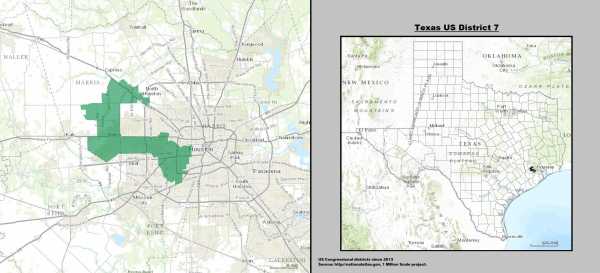
Democrats
- Joshua Butler, a health care administrator
- James Cargas, a former Hill staffer
- Lizzie Pannill Fletcher, a longtime Houston attorney
- Laura Moser, a former freelance journalist and activist
- Ivan Sanchez, an entrepreneur and precinct chair of the Harris County Democratic Party
- Alex Triantaphyllis, a Houston nonprofit executive
- Jason Westin, a doctor and cancer researcher
Republicans
- Rep. John Culberson (R-TX) — incumbent
- Edward Ziegler, energy business executive
Candidates to watch
Texas politics experts say the three Democratic candidates who have risen to the top of the field include Moser, Fletcher, and Triantaphyllis. Westin, the cancer doctor, has also gotten a lot of attention.
The DCCC has also drawn criticism for getting involved in the primary, publishing an opposition research memo against Moser, based on a 2014 Washingtonian piece she wrote in which she wrote she would “sooner have my teeth pulled out without anesthesia” than move back to her grandparents’ home in Paris, Texas, and raising questions about contracts with her husband’s consulting firm.
“When there’s a truly disqualified general election candidate that would eliminate our ability to flip a district blue, that’s a time when it becomes necessary to get involved in these primaries,” DCCC spokesperson Meredith Kelly told Vox. “This district is too important to let it go without trying.”
Two candidates will enter into a runoff if no one can garner 50 percent of the vote.
Issues
Expect disaster relief funding to become an issue as we move closer to the general election in fall. Houston was hit hard by Hurricane Harvey in 2017, and many residents are still feeling the impact.
32nd Congressional District — Dallas
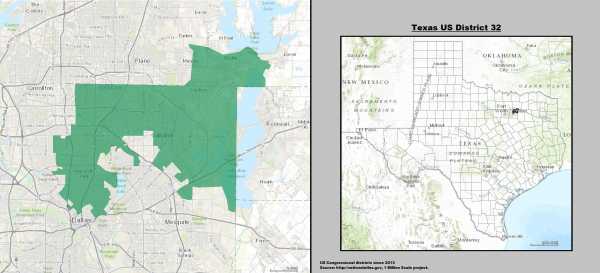

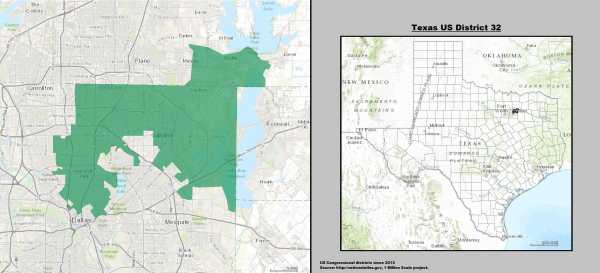
Democrats
- Colin Allred, a civil rights attorney and former NFL player
- Ron Marshall, an aerospace engineer
- Todd Maternowski, a small-business owner
- Ed Meier, a former Obama administration official in the State Department and Hillary Clinton campaign staffer
- George Rodriguez, an attorney
- Lillian Salerno, a former Obama administration official who served as the deputy undersecretary for rural development
- Brett Shipp, a former investigative reporter
Republicans
- Rep. Pete Sessions (R-TX) — incumbent
- Paul Brown, a US Marine Corps veteran and former intelligence analyst
Candidates to watch
Allred, Meier, and Salerno are seen as the three top candidates in a crowded field. The DCCC hasn’t weighed in the same way it did in the Seventh Congressional District. When it gets to the general election, Democrats are sure to try to tie Sessions to Trump; Sessions’s voting record aligns almost perfectly with Trump’s policy priorities. Two candidates will enter into a runoff if no one can garner 50 percent of the vote.
Issues
All three frontrunners in the Democratic primary for the 32nd District are staunch progressives, running on issues including voting rights, education and the economy, and immigration.
23rd Congressional District — San Antonio area to the Mexico border
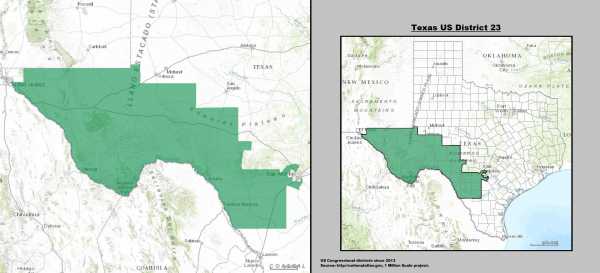

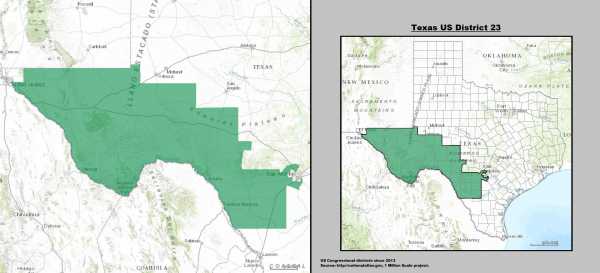
Democrats
- Judy Canales, a former USDA official under the Clinton administration
- Jay Hulings, a former federal prosecutor
- Gina Ortiz Jones, a former US Air Force veteran and an official at the Office of the US Trade Representative under President Barack Obama
- Rick Treviño, a San Antonio teacher
- Angela “Angie” Villescaz, resident of Uvalde, Texas
Republicans
- Rep. Will Hurd (R-TX) — incumbent
- Alma Arredondo-Lynch, a dentist and teacher
Candidates to watch
Jay Hulings and Gina Ortiz Jones have made names for themselves in this district. Hulings is seen as the favorite of the Democratic establishment (he’s been backed by House Minority Whip Steny Hoyer), but Ortiz Jones has the endorsement of Emily’s List and LGBTQ and veterans groups along with strong fundraising numbers. The two candidates will enter into a runoff if neither can garner 50 percent of the vote.
Issues
Immigration is a huge issue in the massive 23rd Congressional District, which covers the vast majority of the US border with Mexico. Incumbent Rep. Will Hurd is a fairly well-liked, moderate Republican who has been trying to distinguish himself on immigration. (He was a co-author of the Hurd-Aguilar bill to protect the young unauthorized immigrants known as DREAMers.) But Democrats are likely to try to tie Hurd’s voting to Trump in the general election.
The Texas governor’s race
Democrats face near-impossible odds in their attempt to unseat Abbott, an incumbent who is one of the most popular governors in the country. But like in other races, they’re running a huge field of candidates.
Democrats
- Adrian Ocegueda, a financial analyst
- Andrew White, a business executive and son of former Texas Gov. Mark White
- Cedric Davis, former mayor of Balch Springs, Texas
- Grady Yarbrough, former teacher
- James Jolly Clark, a business executive in Austin
- Jeffrey Payne, a business executive
- Joe Mumbach, an audio-video technician
- Lupe Valdez, the former Dallas County Sheriff and a US Army veteran
- Thomas Wakely, a former union organizer and business owner
Republicans
- Gov. Greg Abbott — incumbent
- Larry Secede Kilgore, a perennial Texas secessionist candidate
- Barbara Kruger, a retired teacher
Candidates to watch
Valdez and White have been leading the Democratic primary from the start. White is the son of a former governor; Valdez was known for being the only Latina sheriff in the United States when she served as Dallas County sheriff from 2005 to 2017. Valdez has pulled ahead in recent polls, but she’s still not above 50 percent, which would mean another runoff.
Whoever wins will face a very tough general election campaign. “The race between Valdez and White determines who loses to Greg Abbott in November,” said Mark Jones, the Rice University professor. Still, outside political observers say the race could indicate where the future of Texas Democrats lies; Valdez will likely turn out Latino voters, while White could appeal to moderate suburban voters dissatisfied with Trump and the Republicans.
Issues
There is a slew of issues in the governor’s race, but ones sure to come up in the Democratic primary includes the state’s response to immigration and border security, infrastructure, disaster relief, education funding, and access to women’s health clinics.
US Senate race
Democrats
- Sema Hernandez
- Edward Kimbrough
- Rep. Beto O’Rourke (D-TX) — Congress member representing Texas’s 16th Congressional District
Republicans
- Sen. Ted Cruz (R-TX) — incumbent
- Stefano de Stefano
- Bruce Jacobson Jr.
- Mary Miller
- Geraldine Sam
Candidates to watch
This race will come down to O’Rourke and Cruz. O’Rourke is the progressive Democrat who has been campaigning across Texas Barack Obama-style, drawing crowds in even the most conservative areas, according to the Texas Tribune. He’s running on a platform calling for access to universal health care and progressive immigration policies (basically the antithesis of Cruz).
Issues
Cruz is certainly not the most well-liked Republican in the Senate, but he has a 50 percent approval rating among Texas voters, according to a Morning Consult poll. However, his fate is somewhat tied to President Trump’s approval rating, which is much lower. O’Rourke faces extremely long odds, but Democrats will again try to tie Cruz to Trump as much as possible and hope that Trump’s approval rating in the state dips even lower in the coming months.
Sourse: vox.com






